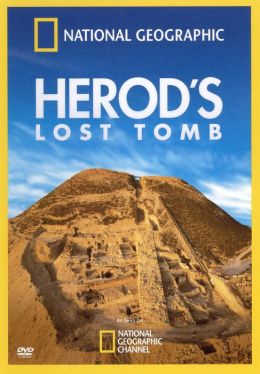
This
excellent documentary about King Herod the Great produced by the National
Geographic Society in 2008 was shown on the National Geographic Channel in
2009. It is available on a DVD and runs to almost one hour.
Herod was
born ca. 71 BC and died ca. 4 BC. In this documentary we hear about his life
and career, about his building program and about the search for his tomb.
He was king
of the Jews and a friend of the Romans. He was king only because the Romans
allowed it. He was not very popular with the Jewish people, especially the
Jewish elite family, the Hasmonaeans, who had ruled the area for many years.
The
documentary tells us that he was Arab by blood and Jewish by faith. Critics say
that he stole the throne like a fox, ruled like a tiger, but died like a dog.
Several
scholarts are interviewed for the documentary. All witnesses are well chosen,
because they are experts in the field.
Early on we
meet Jodi Magness, archaeologist and author of The Archaeology of Qumran and
the Dead Sea Scrolls (2002). Speaking of Herod she says:
“He is the single most important person in the archaeology of the
Later on we
meet Peter Richardson, historian and author of Herod: King of the Jews and
Friend of the Romans (1999). He explains how Herod’s alliance with Rome Actium in 31 BC, when Mark Anthony was defeated by
Octavian (the future Augustus), Herod rushed to Rome
The
documentary also presents Herod’s extensive building program which falls into
three groups:
** To please the Jews, he began the construction of the second temple in
** To please the Romans, he built Caesarea Maritima, a Roman town on the coast northwest of
** To please himself - and to improve his own safety - he built several fortified palaces. The Herodium, named after the king himself, was a circular structure built ca. 30-20 BC on top of an artificial mountain
The central witness in the documentary is Ehud Netzer (1934-2010), archaeologist and author of The Architecture of Herod: The Great Builder (2008), who first came to the Herodium in 1972. Remains of the palace on top of the mountain are still visible today, and so is the rectangular pool on the flat land below. But where was Herod’s tomb? The ancient writer Titus Flavius Josephus tells us that Herod was buried somewhere around the Herodium. But for years nobody knew where it was. At the foot of the mountain Netzer discovered the remains of a building which turned out to be a triclinium, built for mourners; it was not a mausoleum, not a tomb. But he was getting close.
In 2006
Netzer had a new idea: he drew a line from the rectangular pool through the
triclinium to the eastern tower of the palace. Somewhere along this line, he
assumed, the tomb must be. This idea paid of. In April 2007, when Netzer and
his team started digging on the slope of the mountain, about half way between
the pool and the palace, they found a mausoleum with a tomb containing
fragments of three sarcophagi, one red and two white. They assume the red one
was for Herod. They do not know who were placed in the white ones.
It seems
the mausoleum was destroyed and buried about 60 years after Herod’s death. This
happened during the Jewish uprising in AD 66-70 when Jewish troops were using
the palace on top of the mountain as a military base. They hated Herod, who was
seen as a Roman agent, so they smashed his sarcophagus and buried his
mausoleum. This explains why it remained undiscovered until Netzer and his team
found it in 2007.
Herod was
not a nice person. The documentary states this fact many times. He married into
the ruling family, the Hasmoneans, in order to be accepted by the old Jewish
elite, but this plan did not work very well. He had a very suspicious mind: he
had his second wife Mariamne killed. He felt threatened by some of his sons: he
had some of them killed, too. But he was an important person who played a major
role in the history of the Jewish people. He did everything on a grand scale,
both the good and the bad things in his life. As Jodi Magness says:
“He built
more monuments, larger monuments, more elaborate monuments than any other
person” in the history of the land of Israel

The documentary consists of several elements:
(1) We get to see what these places
look like today.
(2) By means of computer technology we get to see what they
would have looked like in Herod’s time.
(3) Some situations have been
reconstructed with modern actors.
(4) We get to meet several scholars and
hear them explain their case. Their contributions are clear and concise.
This
documentary is well written and well produced. All arguments and conclusions seem
to be supported by solid evidence. Therefore it is highly recommended.
No comments:
Post a Comment